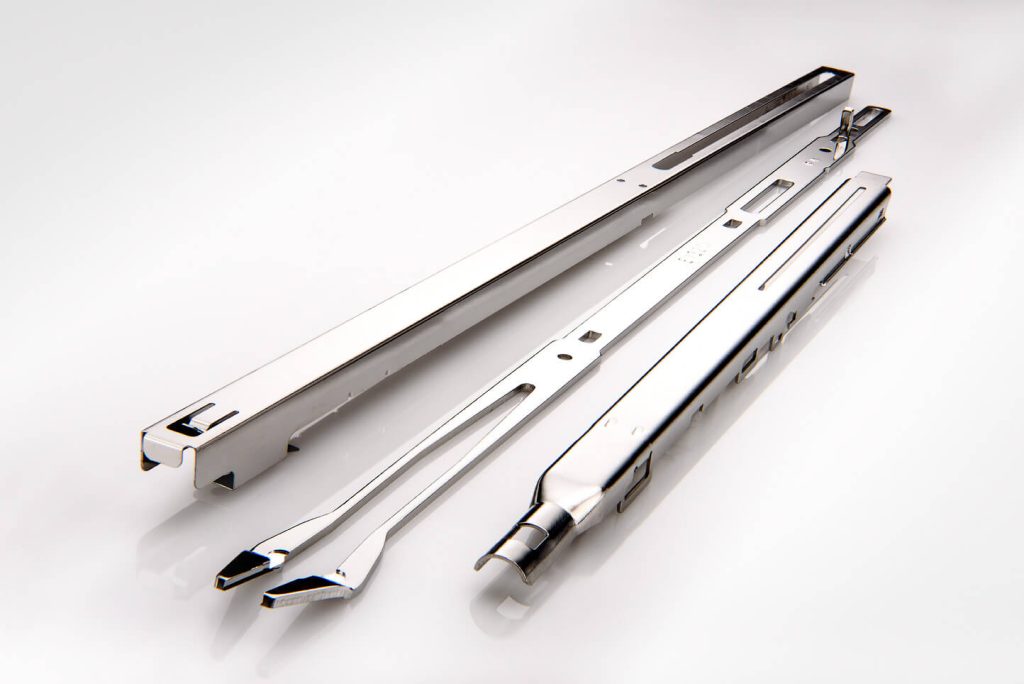Preventing Pitting Corrosion in Stainless Steel: How Passivation Makes the Difference
Stainless steel is renowned for its corrosion resistance, but it isn’t immune to all forms of degradation. In chloride-rich environments, such as coastal or marine settings, stainless steel is particularly vulnerable to pitting corrosion. This localized form of corrosion can compromise structural integrity and lead to costly repairs or replacements. However, the passivation of stainless steel is a proven solution to mitigate these risks, enhancing the metal’s durability and performance.

What Is Pitting Corrosion?
Pitting corrosion occurs when chloride ions break down the protective chromium oxide layer on stainless steel, creating tiny holes or “pits” on the surface. These pits can deepen over time, often going unnoticed until significant damage has occurred.
Chloride-rich environments, such as saltwater, industrial processing areas, and even de-icing applications, accelerate this process, making stainless steel components in these settings especially vulnerable.
How Passivation Protects Against Pitting Corrosion
Passivation is a chemical treatment process that removes free iron and surface contaminants from stainless steel. This process forms a uniform and robust chromium oxide layer, which is critical for corrosion resistance. Here’s how it helps specifically against pitting corrosion:
- Enhanced Protective Layer: Passivation strengthens the natural oxide film on stainless steel, reducing the likelihood of chloride ions penetrating the surface.
- Surface Purity: By eliminating surface contaminants, passivation ensures there are fewer weak points where pitting corrosion can initiate.
- Durability in Harsh Environments: Passivated stainless steel is better equipped to withstand prolonged exposure to corrosive agents, including chlorides in saltwater and humidity-laden air.
Why Coastal and Marine Settings Demand Passivation
Structures and equipment in coastal and marine environments face relentless exposure to salt spray, high humidity, and extreme weather. Without proper treatment, stainless steel components in these environments can experience accelerated degradation.
The passivation of stainless steel is especially critical for:
- Marine Vessels: Hulls, railings, and other stainless steel fixtures that come into direct contact with seawater.
- Coastal Infrastructure: Bridges, buildings, and offshore platforms exposed to salty air and water.
- Industrial Applications: Equipment in desalination plants or salt-processing facilities.
How to Ensure Effective Passivation
To achieve maximum protection against pitting corrosion, it’s important to follow industry best practices for stainless steel passivation. This includes:
- Selecting the right passivation method (e.g., citric or nitric acid) for the specific environment and application.
- Ensuring thorough surface cleaning and preparation before passivation.
- Partnering with a professional service provider, like New England Electropolishing, for precision and quality assurance.
The Long-Term Benefits of Passivation
Investing in the passivation of stainless steel not only prevents pitting corrosion but also extends the lifespan of stainless steel components. This proactive measure saves time and money by reducing maintenance and replacement needs while ensuring optimal performance in demanding environments. Learn more about the electropolishing surface finish.
Conclusion
Pitting corrosion is a serious threat to stainless steel in chloride-rich environments, but it’s not inevitable. With proper passivation, you can protect your equipment and structures from the damaging effects of saltwater and humidity. Whether you’re operating in coastal, marine, or industrial settings, passivation is a critical step in ensuring long-lasting durability and corrosion resistance.
For expert guidance and professional passivation services, contact New England Electropolishing to learn how we can help safeguard your stainless steel components.
Electropolishing Resources

What is Electropolishing?
Electropolishing is an electrochemical and reverse plating process that removes the outer layer of skin on a metal...

The Electropolishing Process
The electropolishing process is initiated by immersing a metal part into a temperature-controlled bath of electrolyte...

Benefits of Electropolishing
Curious about the benefits of putting your parts through the electropolishing process? Read along below where we...

How Much Material Does Electropolishing Remove?
Electropolishing, when done properly is a highly controllable process which removes as little as...

How Much Will Electropolishing Improve the Surface Finish of My Part?
Ra and RMS are both representations of surface roughness. Ra is calculated as the roughness average of a surface’s...

Electropolishing Frequently Asked Questions
Learn the difference between electropolishing and electroplating as well as how the electropolishing process works...

What is ASTM B912?
ASTM B912 is an industry standard for the passivation of stainless steel alloys through electropolishing...

What is ASTM A967?
ASTM A967 is an industry standard specification for the chemical passivation treatments for stainless...

What is ISO 13485?
ISO 13485 is a standard that applies specifically to medical devices. ISO 13485 is designed to be...
